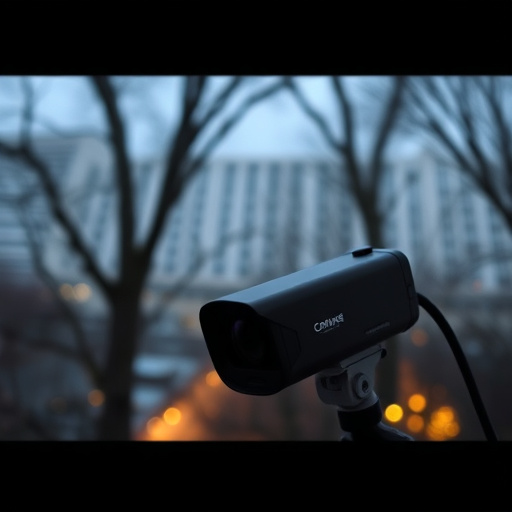Wireless nanny cams without internet connection offer enhanced privacy and security by recording footage locally and operating independently. Their discreet design, leveraging light patterns and variations, makes them nearly undetectable. Detection involves observing light anomalies and using specialized equipment like infrared cameras and static analysis software. Post-detection measures include device inspection, protocol updates, staff training, and integrating these advanced technologies into existing security infrastructure for stronger protection against hidden surveillance.
Uncover hidden threats with our guide on identifying disguised cameras, especially those operating without an internet connection. The wireless nanny cam, often unseen and untraceable, poses a silent risk. Learn how lights can act as a crucial identifier in this clandestine world. We explore testing methods to uncover these devices and discuss post-test measures and future prevention techniques for enhanced security. Stay vigilant and informed in today’s digital age.
- Understanding Wireless Nanny Cam Without Internet Connection
- The Role of Lights in Disguised Camera Identification
- Testing Methods for Uncovering Hidden Cameras
- Enhancing Security: Post-Test Measures and Future Prevention Techniques
Understanding Wireless Nanny Cam Without Internet Connection
Wireless Nanny Cams that operate without an internet connection have become increasingly popular among those prioritizing privacy and security. These devices are designed to be discreet, often resembling everyday objects like light bulbs or smoke detectors, allowing them to capture footage independently of any external networks. This feature is particularly appealing for monitoring sensitive areas where direct internet access may not be feasible or desired.
Without the need for constant online transmission, these wireless nannies offer enhanced security and peace of mind. They record videos locally on an internal memory card, ensuring that your privacy remains intact. Moreover, their standalone operation means no potential vulnerabilities from remote hacking attempts over the internet. This makes them ideal for various applications, from home security to professional surveillance, where a reliable, discreet monitoring solution is required without compromising connectivity.
The Role of Lights in Disguised Camera Identification
In the realm of disguised camera identification, lights play a pivotal role in both revealing and concealing surveillance equipment. Advanced wireless nanny cam without internet connection models leverage light patterns, intensity, and color changes to blend seamlessly into their surroundings while transmitting critical data. By mimicking natural light variations or employing clever illumination tactics, these cameras can remain virtually undetectable for extended periods.
This stealthy approach is particularly valuable in situations where a Wireless Nanny Cam Without Internet Connection must operate without drawing attention. The strategic use of lights not only enhances the camera’s disguise but also serves as a critical test for its successful integration into various environments. Understanding how to manipulate and interpret light signals is essential for accurately identifying these concealed devices, ensuring security measures remain effective against increasingly sophisticated surveillance technology.
Testing Methods for Uncovering Hidden Cameras
Testing hidden cameras, such as a wireless nanny cam without internet connection, requires a methodical approach to uncover their presence. One effective technique involves examining lights in the area. Cameras often emit subtle light when active, which can be detected by using specialized equipment or simply observing unusual lighting patterns at night. This visual scrutiny is particularly useful in homes and offices where natural light is minimal, allowing for more opportunities to spot the telltale signs of a hidden camera.
To enhance detection, professionals employ various tools like infrared cameras that can pick up heat signatures from electronic devices. Additionally, static analysis software scans for irregular patterns or anomalies on walls and ceilings, suggesting the presence of hidden lenses. These testing methods are crucial in ensuring privacy and security, especially when dealing with wireless nanny cams that operate without an internet connection, making them harder to trace but not entirely invisible.
Enhancing Security: Post-Test Measures and Future Prevention Techniques
After successfully identifying hidden cameras, the next crucial step is enhancing security and preventing future incidents. One effective measure is implementing robust post-test procedures. This includes thoroughly inspecting all devices and components to ensure no residual data or tracking software remains active. Additionally, updating and fortifying security protocols is essential, especially for organizations dealing with sensitive information. Regular staff training on privacy best practices and the latest camera detection techniques can significantly deter future breaches.
Looking ahead, adopting advanced technologies like wireless nanny cams without internet connection can provide an extra layer of protection. These innovative devices operate independently, making them harder to detect and access remotely. By integrating such measures into security infrastructure, institutions can create a more robust defense system against concealed surveillance, ensuring the privacy and safety of their spaces.
Disguised camera identification, particularly through light analysis, is a critical aspect of enhancing security. As demonstrated, wireless nanny cams without internet connection can be effectively detected using specialized testing methods and equipment. By understanding the role of lights in camera operation, professionals can uncover hidden devices, ensuring safety and privacy. Post-test measures and ongoing research into prevention techniques will further fortify defenses against such covert surveillance.
